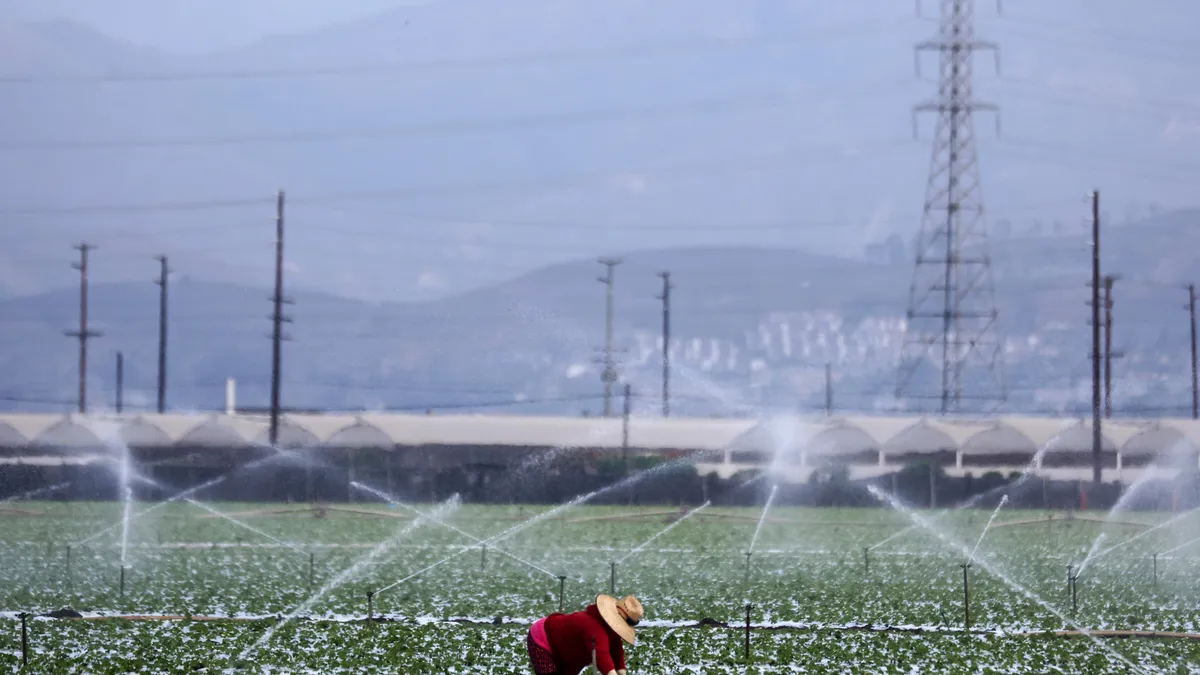Dive Brief:
-
Produce farmers will have to start conducting agricultural water assessments and taking mitigation steps to prevent harmful bacteria from entering the nation’s supply of fruits and vegetables under a long-anticipated food safety rule.
-
The Food and Drug Administration’s final rule, published May 6, replaces pre-harvest water quality criteria and testing requirements from 2015 with a systems-based approach to identifying potentially hazardous conditions and determining what steps should be taken to address and reduce any contamination risks before they occur.
-
This revision has been anticipated by agricultural and public health circles for more than 10 years as the FDA wrestled with updating the Produce Safety rule amid growing rates of food recalls. Dates for rule compliance vary by farm size and the assessments do not alter existing requirements for harvest and post-harvest water activities.
Dive Insight:
Despite advancements in agriculture and food processing technology, foodborne illness outbreaks linked to raw and processed foods continue to affect tens of millions of people each year. While contaminated water is considered a major culprit in large-scale outbreaks, farms were previously not required to test water for pathogens.
Contaminated water may have been a factor in a massive, multistate outbreak of E. coil in 2018, which prompted federal officials to issue the unusual directive for consumers and retailers to throw out all romaine lettuce following nearly 200 illnesses and five deaths. An investigation into the outbreak found the strain was introduced in a Yuma County irrigation canal adjacent to a large concentrated animal feeding operation, though it's unclear whether the facility played a part.
The latest rule aims to better address potential pathogen contamination at the source before fruits and vegetables are harvested, building on a set of pre-harvest water quality requirements established under the Obama administration.
The 2015 rule has come under scrutiny from many agriculture stakeholders for establishing “one-size-fits-all” requirements for agricultural water, according to public comments. At the time, the FDA acknowledged gaps in the science related to water quality monitoring.
Produce farmers will be required, under the new rule, to evaluate a variety of factors each year, including their water system, water use practices, crop characteristics, environmental conditions and potential impacts on water from nearby land, according to the FDA. Additionally, farmers must test their water quality in certain circumstances and based on assessment findings, implement effective mitigation steps within a timely manner.
The revisions require all produce farmers, except those who grow sprouts, to conduct pre-harvest water assessments annually or whenever a significant change occurs that could increase the risk of harmful bacteria contamination.
The rule amends the 2015 Food Safety Modernization Act final rule on produce safety, which established the first food safety standards for growing, harvesting and packing produce. Water testing requirements were set to go into effect in 2018, though were postponed by the Trump administration.
During the years-long rulemaking process, public responses have been mixed. Supporters of the proposed rule say the assessments are more risk-based, flexible and holistic than the 2015 requirements. Meanwhile, critics have described the changes as too complicated, difficult to enforce and ineffective in preventing foodborne illness.
Connor Kippe, food systems integrity policy specialist at the National Sustainable Agriculture Coalition, welcomed the FDA’s rule and said it demonstrated a marked improvement in understanding the links between risk prevention strategies and public health.
“We deeply appreciate the updated, risk-based approach to Pre-Harvest Agricultural Water Standards and the staggered compliance dates of the final rule by farm size,” Kippe said in a statement.
The rule is effective July 5, 2024. Implementation for very small farms is 2 years, 9 months after the effective date, while small farms have 1 year, 9 months to adapt. All other farms must comply within 9 months.











